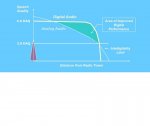I don't see any compelling reason to go down the public safety path and be royally screwed over at every turn.
Public Safety (meaning Law Enforcement and Fire/Rescue) is only getting royally screwed if they are not purchasing P25 equipment; that is the national interoperability standard as I recall. Also, I don't think they are affected by the mandated narrowbanding, but I could be mistaken on that.



